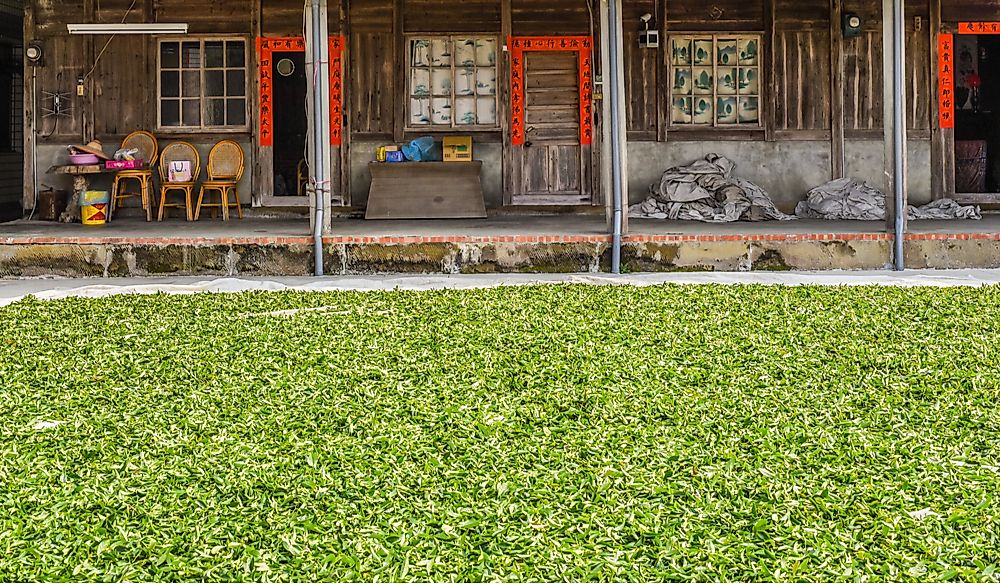What Are The Biggest Industries In Taiwan?

The East Asian nation of Taiwan has one of the largest economies in Asia as well as the world in terms of its nominal GDP which was US$24,337 as of 2017. As a result, the International Monetary Fund (IMF) considers Taiwan an advanced economy. Initially, the companies in Taiwan were owned by the government. However, most of the companies that were previously state-owned are now privately-owned. Its unemployment rate is also quite low at only 3.71% as of February 2019. In 2014, the workforce boasted of 11.54 million employed persons. The largest industries in Taiwan include manufacturing, service, and agriculture.
Largest Industries in Taiwan
Services Industry
The services industry contributes 73% of Taiwan’s GDP. The sector is well diversified as it is made up of food and beverages processing, textiles, information technology, chemicals, transport, advertising, commerce, real estate, communications, construction, petroleum processing, armaments, and electronics among other companies. The services industry continues to thrive boosted by the increasing growth in the spending capacities of the country’s population which is 23.58 million. In 2015, the average salary of an employee working in Taiwan was US$1,609.67 which was a 10% increase from 2009.
Manufacturing Industry
Compared to mainland China, Taiwan’s manufacturing industry is more robust and earns a high revenue for the government. In 2001, the contribution of the manufacturing industry to Taiwan’s GDP was 24.08%. Years later in 2015, the industry’s contribution rose to 30.01%. The county is currently among the top 10 nations in the world in the manufacturing of robots. Taiwan’s main exports in 2016 were machinery, electrical machinery and equipment, plastics, optical, technical, & medical apparatus, mineral fuels (such as oil), vehicles, and organic chemicals. Among these exports, electrical machinery and equipment is the largest incoming earner valued at US$124.1 billion in 2016.
Agriculture Industry
Taiwan’s total annual agricultural produce is around 6.9 million tons. The land area of Taiwan is 35,980 square kilometers out of which 24% is used for agriculture. As of 2013, 47.88% of this arable land was used for cultivating crops, 31.16% was for livestock, 20.87% was for fishing, and 0.09% was used for forestry.
The crops cultivated in Taiwan include rice, betel nuts, fruits, vegetables, and flowers. Rice is the most valuable cash crop in Taiwan with an annual yield worth US$1.17 billion in 2013. In 2001, the country harvested 165,000 tons of Betel nuts. The specific varieties of crops grown include lychee, pomelo, guava, orange, pineapple, pear, watermelon, starfruit, wax apple, jujube, strawberry, mango, and mandarin among others. The annual fruits exports value in Taiwan is US$109.5 million with its largest export market being mainland China. On the other hand, the kinds of vegetables grown include scallion, edamame, cabbage, chayote, broccoli, onion, eggplant, carrot, and Chinese cabbage among others. Vegetable growing regions in Taiwan are the southern and central parts of the country. Taiwan also produces varieties of tea such as pouching tea, black tea, oolong tea, and green tea. In 2013, the tea produced in the country had a value of US$ 219.4 million. Flowers grown in Taiwan are often exported to the United States, Japan, and the Netherlands.
Besides crop farming, Taiwan also engages in livestock farming and fishing. The animals reared include poultry such as chicken (broilers and eggs) and pigs. In 2013, the value of livestock kept in the country was US$4.756 billion. Fishing in Taiwan varies from aquaculture to deep sea to offshore to marine and coastal fishery. The value of the fish caught in the year 2013 was US$1.728 billion.
Imports and Exports
In 2018, the exports traded in Taiwan were worth US$ 335.8 billion which was a 7.2% gain from 2014. The country largely relies on exports for its government revenue with its major export partners being China, Hong Kong, Singapore, US, and Japan. On the other hand, imports in 2014 were valued at $277.5 billion with major imports being electrical machinery and equipment, electronics, vehicles, plastics, crude petroleum, coal, metals (such as iron, copper, and steel), computers, and organic chemicals. Taiwan’s major import partners are Japan, the US, and China.
The New Model for Economic Development in Taiwan
The government of Taiwan adopted an economic model to boost its economic growth which recently suffered stagnation. The focus of the new model is to promote innovation, ensure equitable distribution of economic benefits, strengthen regional and global connections, and boost domestic investments. In pursuit of growth in the pharmaceuticals and biotech sector, the government seeks to pursue areas such as biomedical, green energy, Internet of Things (IoT), smart machinery, and national defense. The government of Taiwan will invest US$ 3.3 billion in each of these five pillars. These funds are for building research facilities and supporting innovation.











